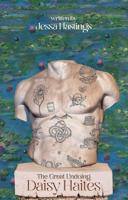Publisher's Synopsis
This historic book may have numerous typos and missing text. Purchasers can usually download a free scanned copy of the original book (without typos) from the publisher. Not indexed. Not illustrated. 1898 edition. Excerpt: ... ister, Pellegrino Rossi, on the steps of the entrance in the same year, and as the place where the so-called Roman Republic was proclaimed in 1849. But *s most of all interesting for the nobility of its proportions and the simplicity of its architecture. It is undeniably, and almost undeniedly, the best building in Rome today, though that may not be saying much in a city which has been more exclusively the prey of the Barocco than any other. The Palace of the Massimo, once built to follow the curve of a narrow winding street, but now facing the same great thoroughfare as the Cancelleria, has something of the same quality, with a wholly different character. It is smaller and more gloomy, and its columns are almost black with age; it was here, in 1455, that Pannartz and Schweinheim, two of those nomadic German scholars who have not yet forgotten the road to Italy, established their printing-press in the house of Pietro de' Massimi, and here took place one of those many romantic tragedies which darkened the end of the sixteenth century. For a certain Signore Massimo, in the year 1585, had been married and had eight sons, mostly grown men, when he fell in love with a lighthearted lady of more wit than virtue, and announced that he would make her his wife, though his sons warned him that they would not bear the slight upon their mother's memory. The old man, infatuated and beside himself with love, would not listen to them, but published the banns, married the woman, and brought her home for his wife. One of the sons, the youngest, was too timid to join the rest; but on the next morning the seven others went to the bridal apartment, and killed their stepmother when their father was away. But he came back before she was quite dead, and he took...

























